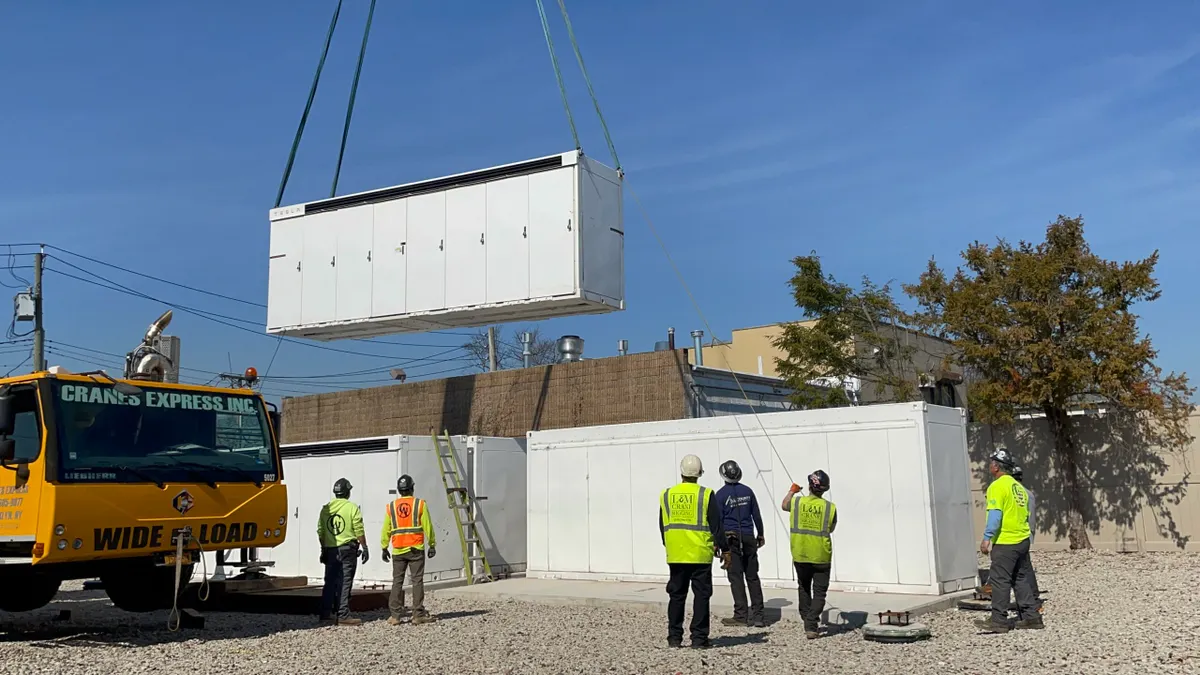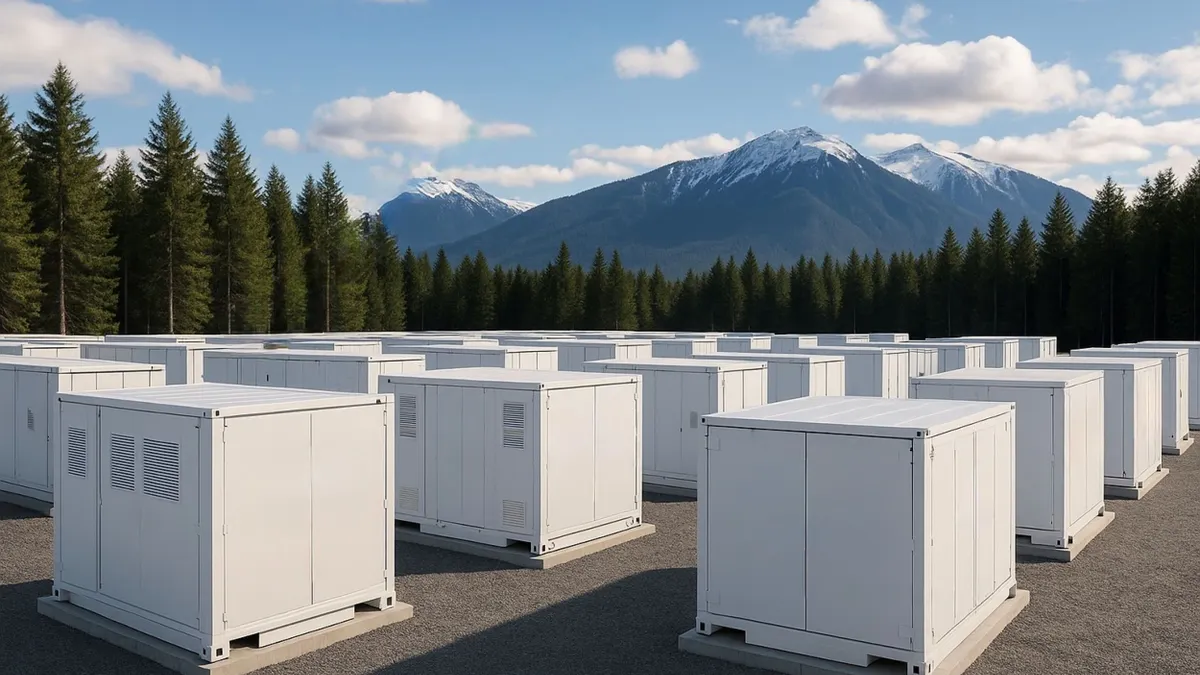This is one of four articles related to the 2021 State of the Electric Utility Survey Report. To see the other articles and download the report, visit our State of the Electric Utility landing page.
The U.S. storage industry continued to set growth records in 2020, but some in the sector still think high costs could be a stumbling block to bringing more storage resources online.
Two-thirds of participants in Utility Dive's latest State of the Electric Utility Survey Report, conducted toward the end of 2020, identified high costs as the biggest challenge their organizations face in adding more storage onto their systems. In comparison, less than a third pointed to insufficient state and federal incentives as a key obstacle, while only a quarter thought that the lack of proper valuation and access to capacity markets is the biggest issue.
Storage costs have been falling precipitously in the last few years, Ryan Hledik, principal with the Brattle Group, acknowledged.
But "even though storage costs have been falling quickly, they started very high. So it's only recently that the cost of storage has come down to the point where it has started to be competitive with other resources," Hledik added.
The storage market saw 3,511 MWh of resources interconnect to the grid in 2020, representing a 214% increase compared to 2019, according to Wood Mackenzie. In the fourth quarter alone, more than 2,100 MWh of storage systems came online, marking a new quarterly U.S. record for the sector, a March report from Wood Mackenzie and the U.S. Energy Storage Association (ESA) found. And that growth trajectory is expected to continue — the report estimated that annual deployments would increase five times in 2025 compared to 2020, driven largely by front-of-the-meter systems.
The U.S. Energy Information Administration (EIA) also expects to see huge increases in battery storage deployments — from around 1,600 MW of installed battery capacity at the end of 2020 to almost 10,700 MW by the end of 2023, said Glenn McGrath, team lead at EIA. EIA does not currently collect survey data on the expected energy capacity of these proposed units, although the general trend points to significant increases in duration.
'It depends on the market'
The average energy capacity cost of utility-scale battery storage, meanwhile has dropped from $2,152/kWh in 2015 to $625/kWh in 2018, an October report from EIA found. Costs can vary depending on region and application — between 2013 and 2018, the average cost of utility-scale batteries in the PJM Interconnection was $1,946/kWh, but only $947/kWh in Hawaii.
Despite these overall declines, costs appear to still be a pain point for the industry; 66% of the 297 participants who responded to a question about the biggest challenge organizations face in adding more storage to their systems pointed to high costs.
"It depends on the market," Hledik said.
In some places where building a gas unit, for instance, is off the table at this point, storage doesn't need to compete with gas and is more economic — compared to a region that's still building a lot of gas that could be cheaper than a battery at today's prices, he pointed out.
"If you're in a restructured market and it's an arbitraged place, storage is not going to pencil on a pure arbitrage play."

Jason Burwen
Interim CEO, U.S. Energy Storage Association
"There are some markets where just the fundamentals make the economics of storage better than others, so you have certain markets that are further ahead in terms of storage being cost effective, and therefore being deployed in larger numbers," Hledik added.
The Brattle Group has done a lot of analysis that has found there are cost-effective opportunities to deploy storage in the fairly near term, according to Hledik. There are already signs of this on the ground — there are several markets across the country where deployment of utility-scale storage projects has increased pretty significantly, and there's a huge amount of capacity in the pipeline.
And while cost declines for storage might not necessarily continue at the rate observed historically, they are expected to continue, Hledik said.
In general, the cost of storage depends on what you're trying to do with a resource, where, and how it's compensated, Jason Burwen, the interim CEO of the ESA, agreed.
"If you're in a restructured market and it's an arbitraged place, storage is not going to pencil on a pure arbitrage play," Burwen said.
However, if storage is proposed as capacity for resource adequacy, and the utility has either pure availability constraints or some risk profiles associated with public policy, then energy storage "could make a lot of sense — and the costs have not changed necessarily between those systems," he continued.
In general, the industry is seeing and expects to continue seeing the most progress when it comes to utility-scale storage, according to Dan Bradley, partner at Guidehouse — this is where the impacts of lower costs and more efficient business models are coming into focus, and resulting in the ability to price storage at a lower mark.
"When you move into distributed energy storage and you start to think about residential storage… [it's] there, I think, that there's a ton of huge opportunities for the industry and there are definitely a number of barriers, cost being one of them," Bradley said.
Insufficient incentives and financing remain pain points
For 31% of survey respondents, one of the biggest challenges regarding adding more storage to their systems is insufficient state and federal incentives. At the moment, storage systems are eligible for the investment tax credit (ITC) only if they are paired with other eligible resources, like solar — although federal legislation introduced by a group of lawmakers in March could change that.
Storage advocates, including the ESA, have been pushing for a standalone storage ITC for a while; in a white paper issued last August, the ESA identified a standalone storage credit as a key federal policy tool to support the deployment of storage.
"This would create an investment signal and facilitate a rush of capital into storage development that would match the demand for storage arising from the clean energy transformation and electrification over the coming decade," the paper noted.
The availability of the ITC has been a major reason that a lot of developers are pairing solar facilities with significant storage capacity, and given the amount of solar-plus-storage being added to the queue, seems like a significant driver for the storage industry, Burwen said.
"On the other hand, there are plenty of projects that are standalone as well, that have penciled [out] without necessarily relying on a federal incentive base — and that's in part been because… those developers may be finding the places where there's the most competitiveness," he added.
State policy will probably be the more significant driver for the industry, according to Burwen — policies like moving towards 100% clean energy commitments or implementing storage targets can be quite significant in terms of changing the way in which a grid planner looks at what's going to be a prudent long-term investment.
But at the same time, more and more utility plans are also taking off without that policy support, because storage resources may be able to meet system reliability needs more cost-effectively today, he added.
Between 15% and 28% of survey respondents pointed to four other challenges they face in adding more storage onto their systems: financing, a lack of proper valuation and access to capacity markets, interconnection obstacles and backlogs, and siting and safety permitting requirements.
These are largely challenges faced by most energy technologies, McGrath pointed out. Financing, specifically, is sometimes tied to whether a developer has a power purchase agreement and how much of their output is under contract.
"That makes it a lot easier to get financing, when you can demonstrate you'll be able to collect a known revenue under contract," he added.























